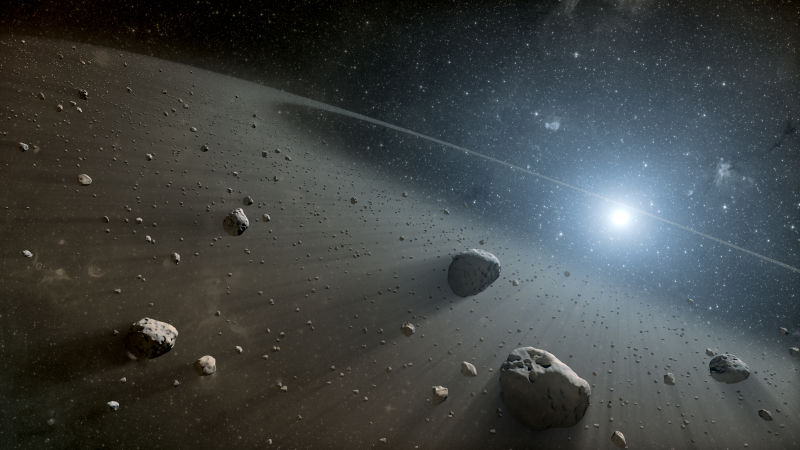
Scientists Discovered The Oldest Asteroid Family Ever And States It Is As Old As The Solar System Itself
Till date, astronomers haven’t seen asteroid families in the Solar System older than about 3 billion years well after the star system came to be 4.5 billion years ago. However, they will have to rethink their expectations. A group of astronomers found several small celestial bodies which are not fragments of larger ones. Their size is at least 35 km.
Researchers studying asteroid data have found an asteroid family that’s over 4 billion years old, and likely as old as the Solar System itself. The modern concept of formation of the Solar system includes two competing hypotheses about the mechanisms of asteroids are planetesimals, which eventually become the seeds of future planets.

The trick was to rule out both existing asteroid families and look for the telltale signs of a very old group of rocks. The scientists used a process of elimination to focus their attention on the handful of asteroids that couldn’t be linked to families but shared similar albedos.
According to one hypothesis, future asteroids a long time was the small clusters of the substance. Their merger and the formation of large celestial bodies, meter, and a kilometer in size, took a lot of time on the order of hundreds of millions of years or more. As a result, now in the asteroid belt between Mars and Jupiter, we can observe a picture similar to that was during the initial formation of the asteroids.
It wasn’t hard to tell that they were ‘dark’ asteroids whose primitive material composition and large size indicated they were born in the Solar System’s early days when huge collisions were par for the course. The findings at once validate and challenge notions of what the early Solar System was like. They support the notion of a far larger asteroid belt with some of the larger planets (Jupiter, Saturn, Uranus, and Neptune) closer to the Sun.
Scattered substance under the action of gravity gathered from objects the size of tens to hundreds of kilometers. What we see now is the result of subsequent collisions with each other, when most of the original planetoid was destroyed with the formation of many small fragments. A team of astronomers led by Kevin Walsh (Kevin Walsh) of the Southwest Research Institute in Boulder (Colorado, USA), decided to investigate this issue in more detail.

However, they also raise questions: what does it mean that asteroids formed when the Solar System looked much different than it does now? And what can we learn about the very beginnings of our cosmic home? There’s a lot more work to be done to get better answers, but this is an intriguing start.
But the key aspect of this work was the isolation from the mass of those asteroids that neither its composition nor in the parameters of the orbit cannot be attributed to any known family. This means that they cannot be fragments of larger bodies. Such asteroids were found, and it turned out that their size is at least 35 kilometers.
“This is thought to have happened somewhere around four billion years ago, and this very old family pre-dates this event,” said Walsh. “So the Solar System would have looked very different, the giant planets would have been tightly packed and close to the Sun, and the entire Kuiper Belt beyond Neptune would have been present.”
Among the next steps, Walsh and Delbo’ would like to keep finding more families in the Main Belt. The very first population of asteroids defines a first and critical step in the formation planets, so the more we learn about them, the more we learn about the important processes required to form planets.